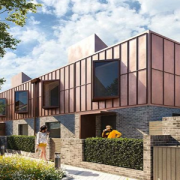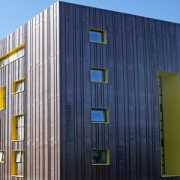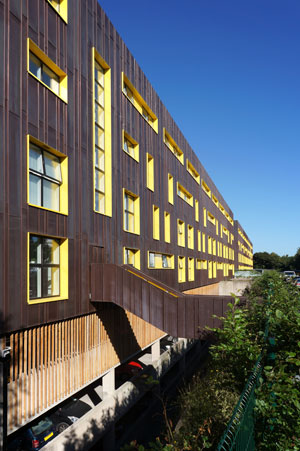CBI unveils vision for how the government can drum up private investment for ‘infrastructure revolution’ to build green economic recovery
#zeroemmissions #infrastructure #construction #cbi
Regulatory bodies should be given more responsibility for ensuring delivery of infrastructure under the government’s long-awaited National Infrastructure Strategy aligns with the UK’s net zero emissions target.
That is one of the key recommendations contained in a major new report from the Confederation of British Industry (CBI), which sets out its vision for how the government could galvanise private sector investment behind a sweeping infrastructure programme that would both drive a recovery from the coronavirus crisis and put the UK on track to meet its climate targets.
Achieving net zero emissions would require transformative investment in highly regulated industries such as energy and transport, and as such regulators should be given a “specific regard” to deliver the National Infrastructure Strategy and a “clear responsibility” to ensure regulatory policy aligns with the UK’s net zero ambitions, as well as other government strategic objectives on infrastructure, the CBI said.
The proposal echoes similar calls from leading figures in the energy industry and a number of opposition MPs, who have long argued that regulatory bodies such as Ofgem and Ofwat require an explicit mandate to support and enable the net zero transition. Critics have argued that a tendency by regulators to prioritise shorter term concerns, such as limiting increases in energy costs, has hampered investment in critical green infrastructure, such as smart grid upgrade programmes.
Among the other recommendations listed in the CBI paper are for calls for the National Infrastructure Commission and Infrastructure and Projects Authority to given greater independence and authority to hold government to account on infrastructure delivery progress, and proposals for the National Infrastructure and Construction Pipeline to be reformed to provide greater clarity on investment opportunities for the private sector.
The report, dubbed Financing the Future, collates recommendations from investors, developers, engineers, and consultants that make up the CBI’s membership. It emphasises that the UK must plough ahead with a significant programme of infrastructure investment if it is to meet its climate ambitions and tap the economic gains projected to be delivered through green growth.
“The delivery of new infrastructure will also play a key role in supporting a green recovery, and progressing towards meeting the UK’s target of net zero greenhouse gas emissions by 2050, as modern networks and new methods of construction help cut emissions,” it states.
But with the public purse straining from a raft of Covid-19 support measures and a £372bn deficit expected in 2020-2021, private sector investment will be a critical driver of this ‘infrastructure revolution’, the CBI argued.
“While the UK government’s commitment to delivering infrastructure remains undeterred, the country’s fiscal position has substantially worsened,” said CBI chief policy director Matthew Fell. “In this context, the private sector now has an even more important role to play in helping to bridge the funding gap needed to deliver the government’s vision for UK infrastructure.”
In the event that the UK leaves the European Investment Bank, the CBI reccomends the government to set up a UK infrastructure bank focused on ‘crowding in’ private finance by reducing investor risks and promoting market stability.
Fell stressed the government must take steps to tackle “concerns about regulation and a lack of clarity about investment opportunities” as it moves ahead with its plans to spend £640bn on revitalising Britain’s roads, railways, broadband, and housing through measures announced in the March Budget.
“The government must commit to an approach that gives confidence to investors and capitalises on the attributes of businesses and public sector establishing itself once again as a world class destination for investment,” he said.
Industry leaders today welcomed the report’s publication, predicting that if adopted its recommendations would help the UK ‘build back better’.
Guy Thompson, director environmental futures at Wessex Water, said: “We need to invest more in essential infrastructure and to take a long-term view on that investment. The focus on a green economic recovery from the Covid crisis presents an opportunity to build infrastructure that is more resilient in the face of climate change and other environmental pressures.”
His comments were echoed by Richard Threlfall, global head of infrastructure at KPMG International, who argued that “with constrained public finances, now more than ever, we need to attract private finance, both from the UK and from inward investment”. “I welcome the powerful set of recommendations in this report, which if enacted would really help the UK to build back better,” he added.
Commenting on the report, a spokesperson from the Department for Business, Energy and Industrial Strategy said: “We’re committed to building a Britain with world class infrastructure. Spring Budget 2020 set out that the public sector will invest £640bn over five years in our future prosperity.”
The government has repeatedly stressed that it is committed to engineering a ‘green recovery’ and unleashing an infrastructure boom akin to Roosevelt’s New Deal as it looks to revive the economy in the wake of the coronavirus crisis.
But campaigners have called on the government to fast-track its infrastructure plans, highlighting how both Germany and France have already unveiled multi-billion Euro green stimulus programmes.
The CBI’s calls for a clearer net zero mandate for regulators also comes ahead of a crucial decision for energy regulator Ofgem as it weighs up a new set of price controls for network operators. Leading network operators have argued they need a more generous price control regime to help draw in the investment required to deliver a new wave of smart grid and green gas technologies.
Source: Business Green















